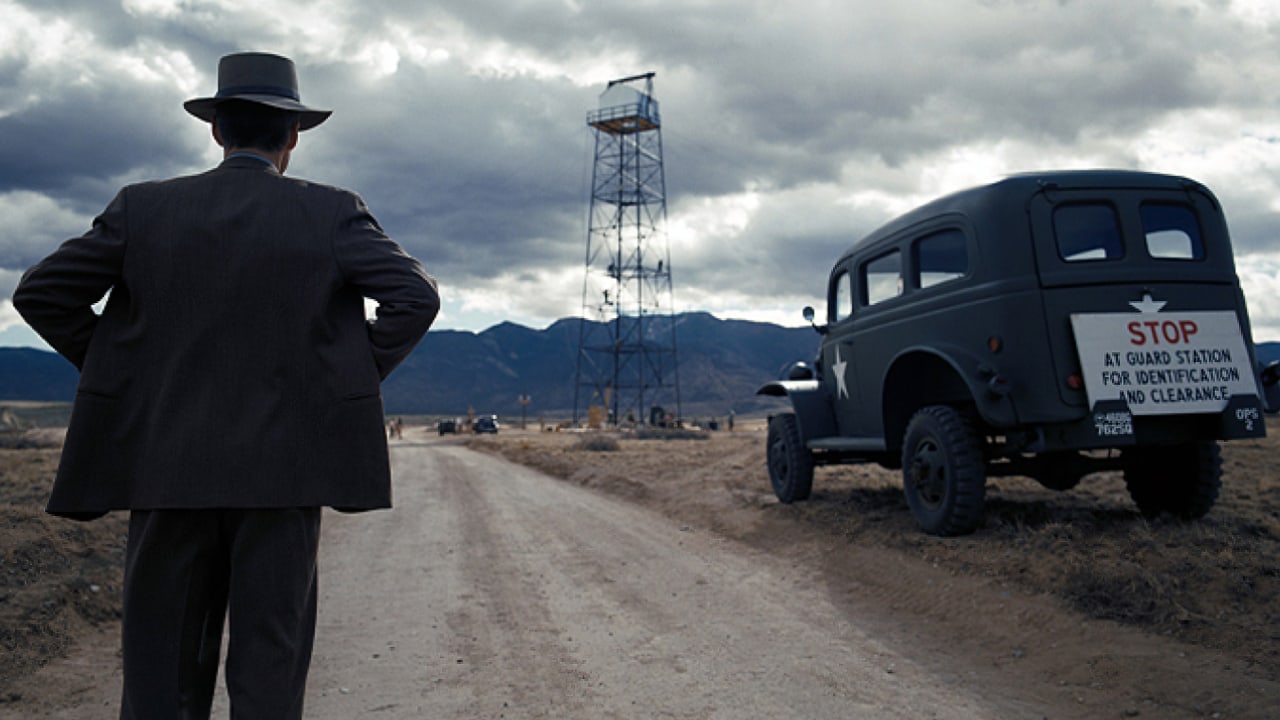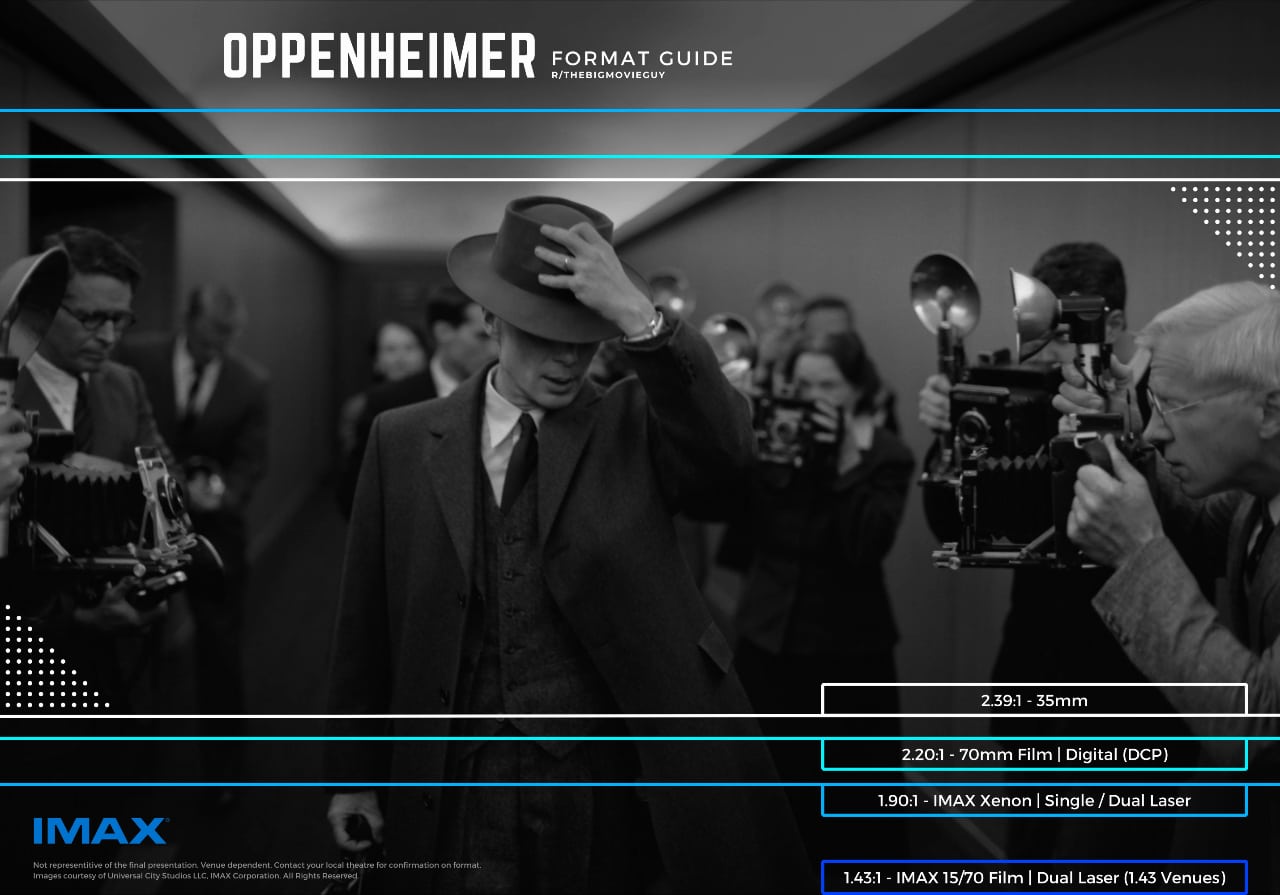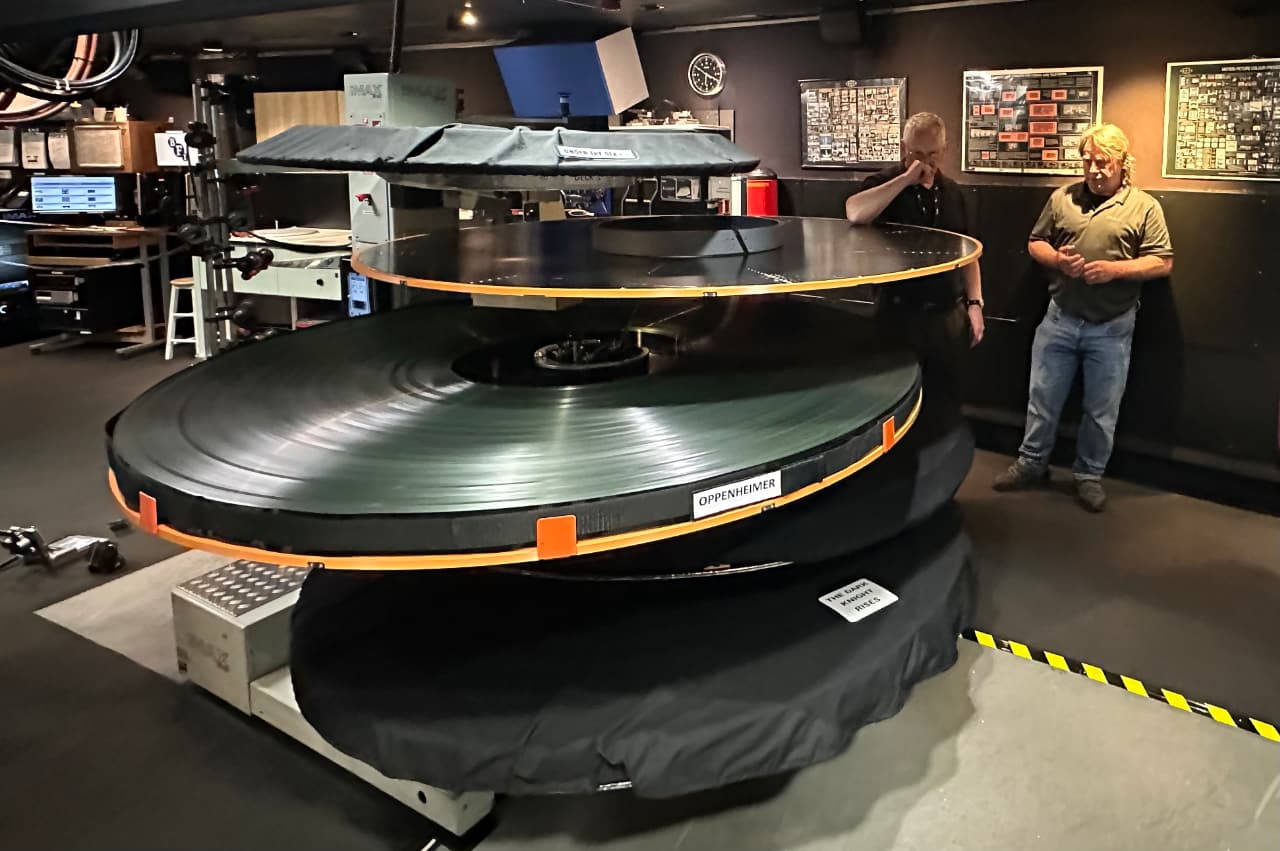
Shooting and screening Oppenheimer in IMAX 15/70 is a hell of a technical achievement. Roland Denning details the process and then went along to the Science Museum cinema in London to see if it was worth the effort.
The death of film has been reported many times – I’ve written a few obituaries myself. And yet it struggles on. Let’s put this into perspective: although a handful of prestige, high budget projects in cinema and TV continue to shoot on film, it is a very tiny minority of productions that are not digitally originated.
Making art is not a rational process
I started my career on film and, although I have some romantic nostalgia for the technology, for me it lacks the mystique that it has for younger generations who’ve probably never had to use it. In many ways I love the stuff, but I find it tiresome how it’s been fetishized. Let’s be honest: film has a certain charm but is extremely expensive and a pain to use. It is cumbersome, fragile and limiting. Today, there are few rational arguments for shooting on film, but then making art is not a rational process.
And yet… just when so many have dismissed it, along comes Christopher Nolan’s Oppenheimer, three hours long and not only shot entirely on film, not only shot on 65mm IMAX film (along with regular 65mm film), but released on 70mm IMAX. You can’t get much more photochemical than that.
Lauded for its limitations
I’ve noticed the arguments in favour for film have shifted in recent years. No longer is there so much talk of greater dynamic range, better highlight roll-off, higher resolution or preferable colour palette; digital has surpassed film in almost all these aspects (and if it hasn’t today, it will tomorrow).
Now people applaud film’s limitations: its organic look, the almost imperceptible jitter, its inimitable grain or the physical relationship between the artist and the tools of production. Shooting on film is restrictive; it determines what you can achieve, but that’s exactly why many want to use it. The stuff that’s going through the gate is so expensive there is a particular concentration felt by the crew when you turn over. Digital can look like anything, but film, for better or worse, always looks like film.
Oppenheimer was released on a whole variety of formats including digital IMAX and 15/70 IMAX film. A hundred regular 70mm prints were also produced. 15/70mm IMAX is 70mm film running sideways (15 perforations per frame), so each frame is more than 8 times the size of a regular 35mm frame. It is magnificent and vastly impractical. The cameras are huge and noisy, the film costs extortionate, and 15/70 projectors very rare. The majority of IMAX screens are digital and use laser projection - there are only 30 cinemas in the world that can screen actual 15/70 IMAX, including just three in the UK. The IMAX print is about 11 miles long and arrives on 53 reels. It is an absurdly extravagant format. But is it worth it? I went along to the Science Museum cinema in London to find out.
Oppenheimer is a big film in so many ways and the subject matter alone - the construction a device capable of destroying the entire planet - does not get any more momentous. But I’m not going to discuss here the many achievements and flaws of the film as an artwork, just the means of delivery.
The ultimate film format?
The native IMAX format is a unique and eccentric 1.44:1 aspect ratio (although some laser IMAX cinemas use 1.90:1). There aren’t that many IMAX theatres in the world in any form, so 99% of audiences will watch the movie in another format (there are a total of four different approved formats for cinemas). IMAX means a whole different approach to framing: in IMAX cinemas the top and bottom of the frame are going to be in the peripheral vision of the viewer – this can work, but it is anathema to the cinematographer who likes working with precise framelines and compositions.

An illustration of how different formats frame a scene from TheBigMovieGuy
Do we really want cinema to be immersive?
Throughout the history of cinema there has been an impulse to put movies on bigger and bigger screens, as if the ultimate aim is to wrap the world around us. Rather than heralding great artistic achievements, many of these attempts have ended up in the realm of fairground sideshows – literally, in the case of Cinerama.
The IMAX screen is big, but does that make the film better? My answer is a resounding ‘no’.
Much of Oppenheimer is a drama of conflicting personalities told in dialogue-heavy scenes, and I would argue that being immersed in close-ups and mid shots the size of a house actually works against the narrative. It is different when it comes to the more visceral experience of the bomb tests itself – and Nolan’s use of the superb IMAX sound system (12 channels of uncompressed audio) makes these sequences very impressive indeed.
IMAX 15/70, for better or worse, does look like film. In fact, Oppenheimer evokes the contrasty look of Hollywood colour films of the fifties – leathery brown skin tones and crushed blue-black shadows. Some sections of the film are in black and white, and are more reminiscent of news footage rather than classic monochrome cinema. The image is rock steady but there is discernible grain. It’s a stylised rather than naturalistic look, and far removed from the soft subtleties of contemporary digital cinema.
It is very rare to see a movie made today that has been shot and projected on film without a digital intermediate. We are used to the sophisticated grading that digital technology allows. There is no digital intermediate with IMAX 15/70 (except, perhaps, for some digital VFX layering in the bomb sequences). I have not seen the digital IMAX version of Oppenheimer so I don’t know to what extent the Nolan exploited the potential of a digital grade for these.
Bigger is not always better

IMAX film is not known for its low shipping costs...
Nolan believes that 15/70 IMAX is the ‘gold standard’ of cinematic experience, and many fans throughout the world believe the same. But photochemical film is not magic, its appeal is much more to do with evoking the past rather than providing extra texture or subtlety.
Big is not better, and cinema is not about the size and shape of the screen, and rarely about immersion. It may seem like sacrilege, but I’d rather watch a movie like Oppenheimer on a regular 2.39:1 screen.
To shoot a movie on film today is a major expensive – a luxury open to very few filmmakers. To shoot a movie on IMAX film is an extraordinary extravagance that only 1% of the audience, if that, will get to appreciate. The compromises necessary may outweigh the final experience and could even seem self-indulgent on the part of the very few directors with the power to demand it. I’m glad that someone is doing it, but for me it doesn’t automatically make for greater movies.
Tags: Production


Comments